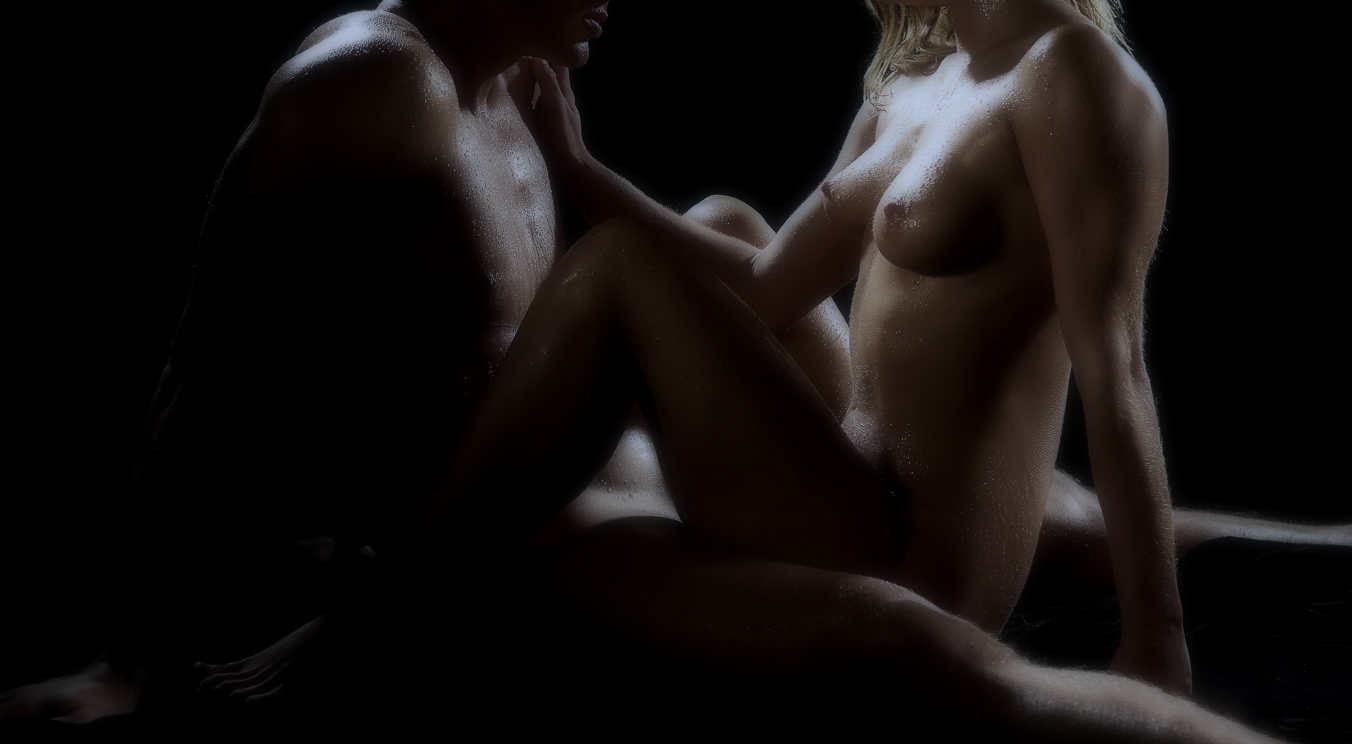
Ancient origins.
The lotus position is actually just the Western name for the most famous tantric sex position: the yab-yum. “Likely, the term ‘lotus’ took off because someone decided it is more palatable to Western ears,” says Barbara Carrellas, author of Urban Tantra: Sacred Sex for the Twenty-First Century.
If you thought tantric sex was something only practiced by deeply confident people with lots of time spare then you’re not alone, but actually this type of intimacy is working its way more and more into the mainstream.
What makes the yab-yum position tantric, however, is not the configuration of your bodies but how you make love in that position, she says. “Tantric sex means you’re breathing, focused on the moment (and not some future orgasmic goal), and being creative,” she says. Meaning, simply getting into the lotus position doesn’t mean you’re having tantric sex.
Advantages of the lotus position:
More intimate connection with your partner.
We usually pick sex positions based on what you’re in the mood for. If you’re craving more intimacy and romance in your sex sessions, the lotus position is perfect. It offers the opportunity for kissing, full-body embraces, and extreme depth. It has been noted this can result in extremely powerful G-spot and cervical orgasms for the female. For the male, ejaculations in this position are intense and plentiful – directly against (and into) the partner’s cervix. She is truely ‘taken’. Naturally, this is only where you are fluid bonded with a trusted partner – practice safer sex otherwise, of course.
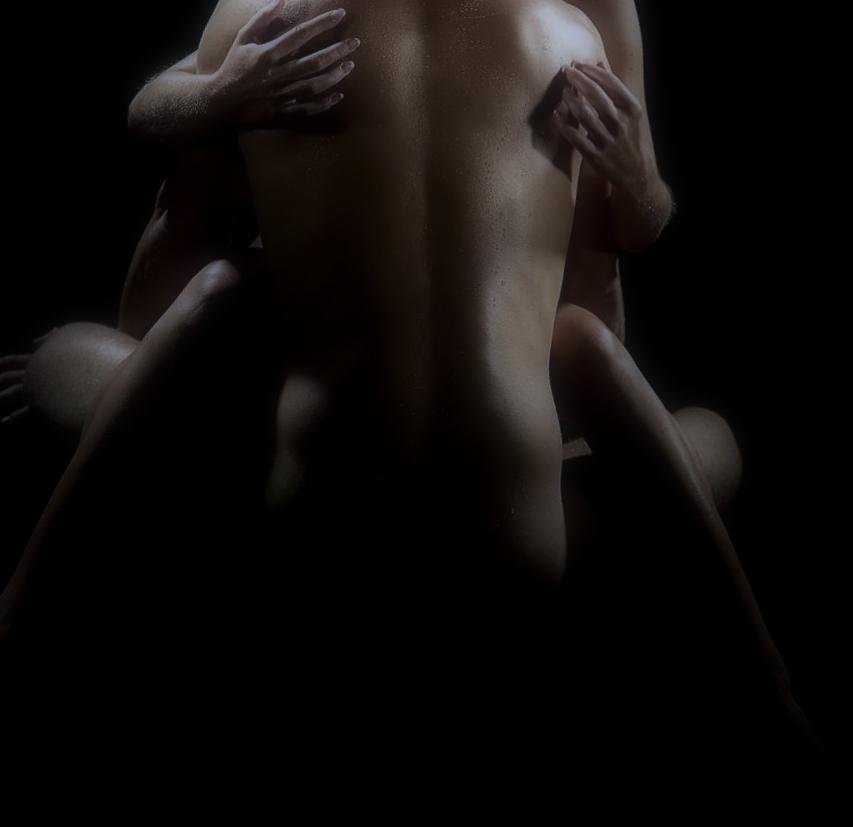
How to enjoy it
Have your partner sit upright with their legs folded. If he finds it uncomfortable, he could sit on a chair, or the edge of the bed instead.
Sit on his lap, wrapping your legs around his waist and arms around his shoulders prior to penetration. You can allow your legs to hang loosely if you’re both sitting on a chair. Then have him wrap his arms around your waist and rock back-and-forth as he penetrates slowly.
Now it’s time to build sexual tension with some skin-to-skin contact. Get up-close as much as possible to stimulate each other’s bodies. To really experiment, keep both eyes closed or open and place the tip of your tongues together and test out different ways of breathing simultaneously.
Try a variety of different movements in this position – try slow thrusting up and down, side-to-side or arch your lower-back while rocking rhythmically onto his pelvis as you breathe in and out. Then let the sexual energy flow until you both reach an orgasm.
“Incorporate eye-gazing, in-sync breathing, and touching your foreheads (your third eye) together to increase the feeling of connection even more,” suggests Barbara Carrellas . “This is not a position for a fast fuck! It lends itself better to slow lovemaking, deep penetration and a soulful connection.”
Energetically powerful.
“In this position, all your chakras are lined up with your partner’s chakras, which creates multiple energy circuits between you,” says Carrellas.
A chakra refers to a center of concentrated, spiritual energy throughout the body. Early traditions say that every human has seven chakras that run from your pelvis up your spine and to the top of your head. Even if you’re not into spiritual stuff, all that means is that this position can feel uniquely energizing because your bodies are so in sync.
The seven chakras are the main energy centers of the body. You’ve probably heard people talk about “unblocking” their chakras, which refers to the idea that when all of our chakras are open, energy can run through them freely, and harmony exists between the physical body, mind, and spirit.
Chakra translates to “wheel” in Sanskrit, and you can imagine them like wheels of free-flowing positive energy.

Chakras
1. Root Chakra (Muladhara)
The Muladhara, or root chakra, represents our foundation. On the human body, it sits at the base of the spine and gives us the feeling of being grounded.
When the root chakra is open, we feel confident in our ability to withstand challenges and stand on our own two feet. When it’s blocked, we feel threatened, as if we’re standing on unstable ground.
Location: Base of spine, in tailbone area
What it controls: Survival issues such as financial independence, money, and food
Mantra: “I can’t grow from an unsteady foundation.”
Color: Red
Element: Earth
Stone: Hematite
Yoga pose: Warrior I
When it develops: 1-7 years old
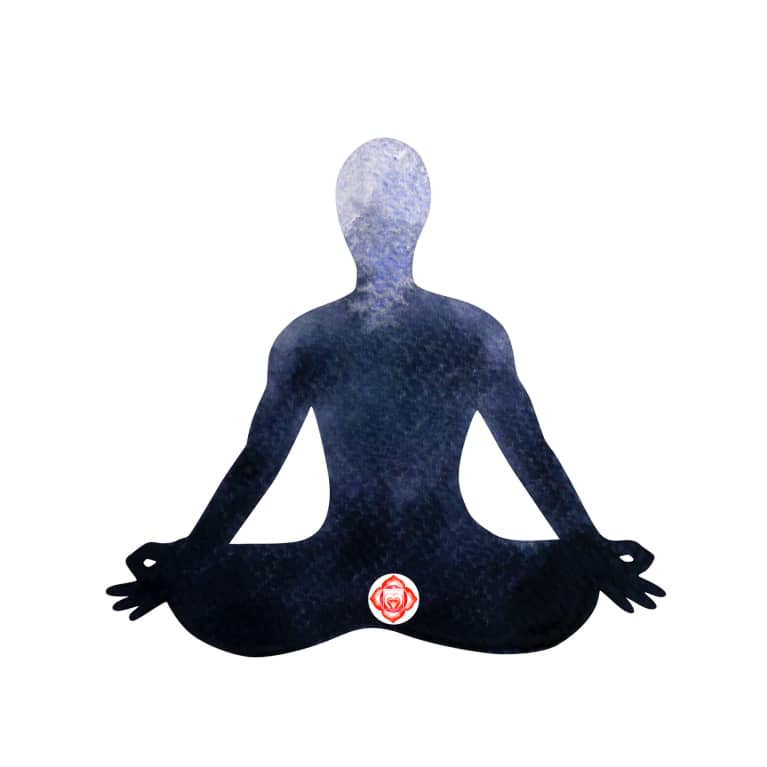
2. Sacral Chakra (Swadhisthana)
The Swadhisthana, or sacral chakra, helps inform how we relate to our emotions and the emotions of others. It also governs creativity and sexual energy. Those with a blocked sacral chakra could feel a lack of control in their lives.
Location: Lower abdomen, about 2 inches below the navel
What it controls: Your sense of abundance, well-being, pleasure, and sexuality
Mantra: “I always honor others but not before myself.”
Color: Orange
Element: Water
Stone: Tiger’s Eye
Yoga pose: Bound Angle Pose
When it develops: 8-14 years old
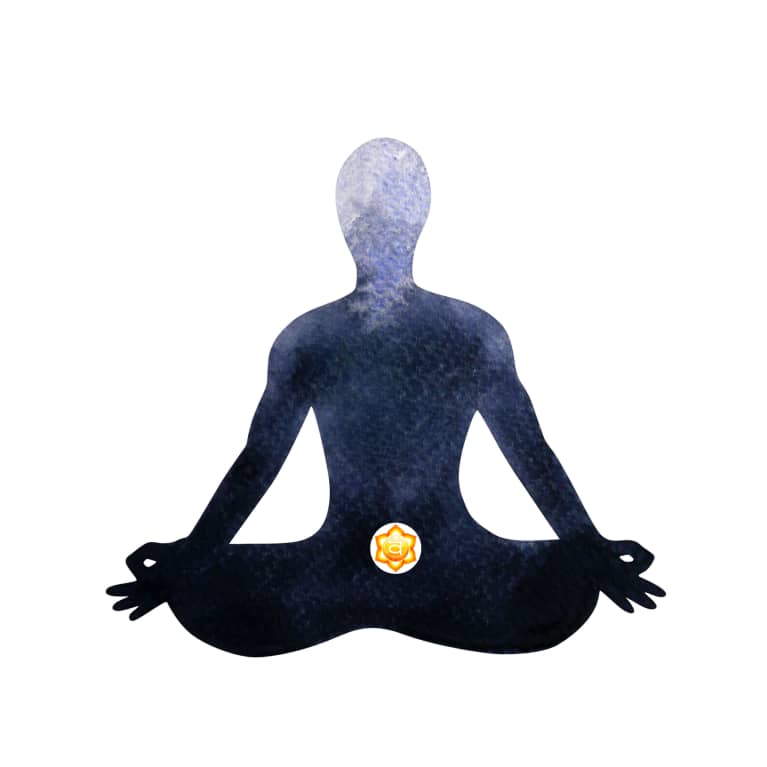
3. Solar Plexus Chakra (Manipura)
The third chakra, the solar plexus chakra, speaks to your ability to be confident and in control of your life. Think back to the last time you had butterflies or felt a pit in the stomach: That’s the Manipura chakra at work.
If your solar plexus chakra is blocked, you might feel overwhelming amounts of shame and self-doubt. Those with open sacral chakras are free to express their true selves.
Location: Upper abdomen in the stomach area
What it controls: Self-worth, self-confidence, and self-esteem
Mantra: “Self-love starts when I accept all parts of myself.”
Color: Yellow
Element: Fire
Stone: Amber
Yoga pose: Boat Pose
When it develops: 15-21 years old
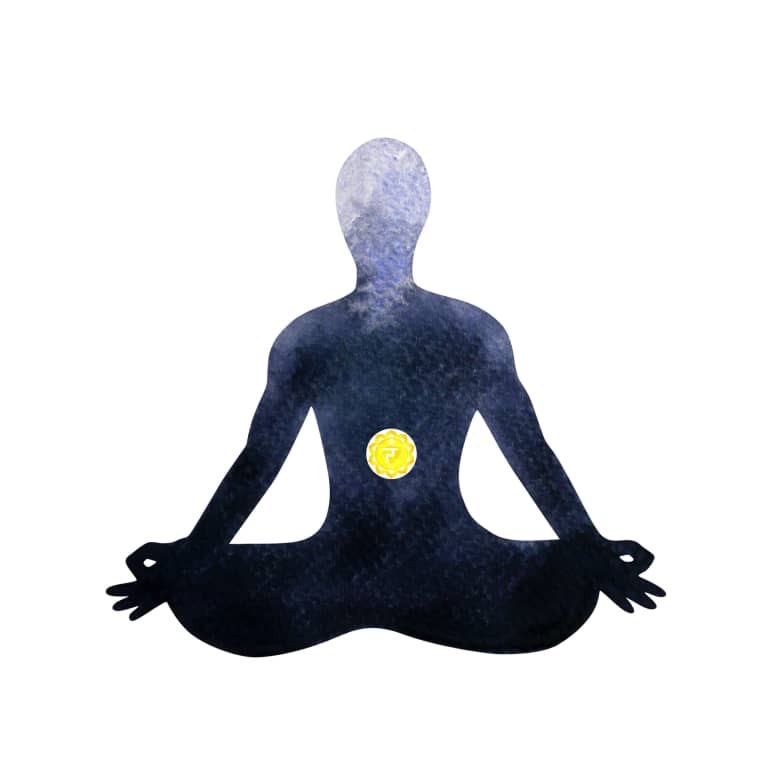
4. Heart Chakra (Anahata)
The Anahata, or heart chakra, is the bridge between the lower chakras (associated with materiality) and the upper chakras (associated with spirituality). As the name suggests, this chakra can influence our ability to give and receive love—from others and ourselves.
Someone with a blocked heart chakra will have difficulty fully opening up to the people in their life. If someone’s heart is open, they can experience deep compassion and empathy.
Location: Center of chest, just above the heart
What it controls: Love, joy, and inner peace
Mantra: “When I love myself, loving others comes easily.”
Color: Green
Element: Air
Stone: Rose Quartz
Yoga pose: Camel Pose
When it develops: 21-28 years old
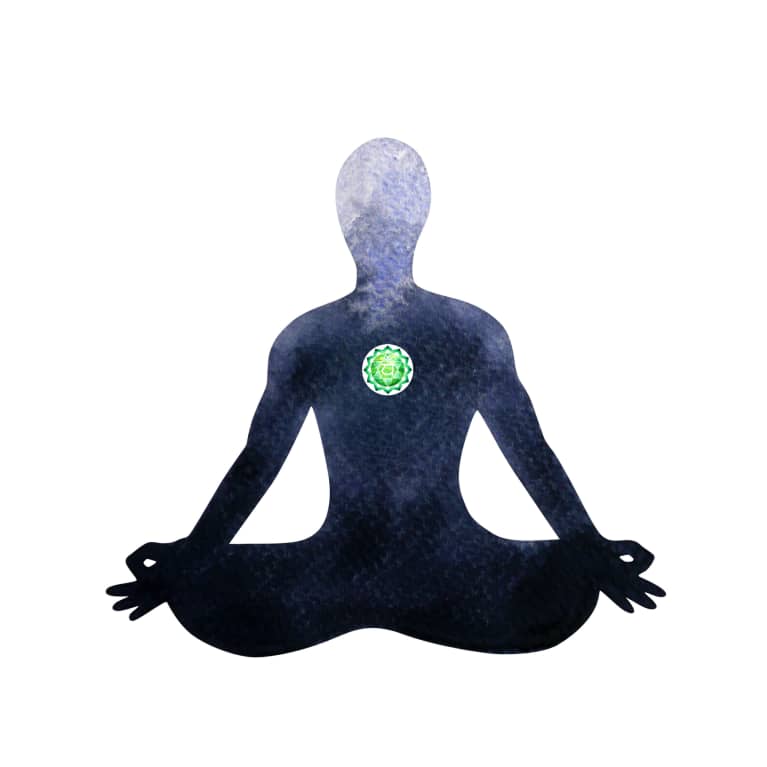
5. Throat Chakra (Vishuddha)
The Vishuddha, or throat chakra, gives voice to the heart chakra and controls our ability to communicate our personal power.
When it’s functioning at full capacity, it allows us to express ourselves truly and clearly. Someone with a blocked throat chakra will feel like they have trouble finding the words to say how they truly feel.
Location: Throat
What it controls: Communication, self-expression, and truth
Mantra: “I speak my truth, always.”
Color: Light Blue/Turquoise
Element: Sound/Music
Stone: Aquamarine
Yoga pose: Fish Pose
When it develops: 29-35 years old
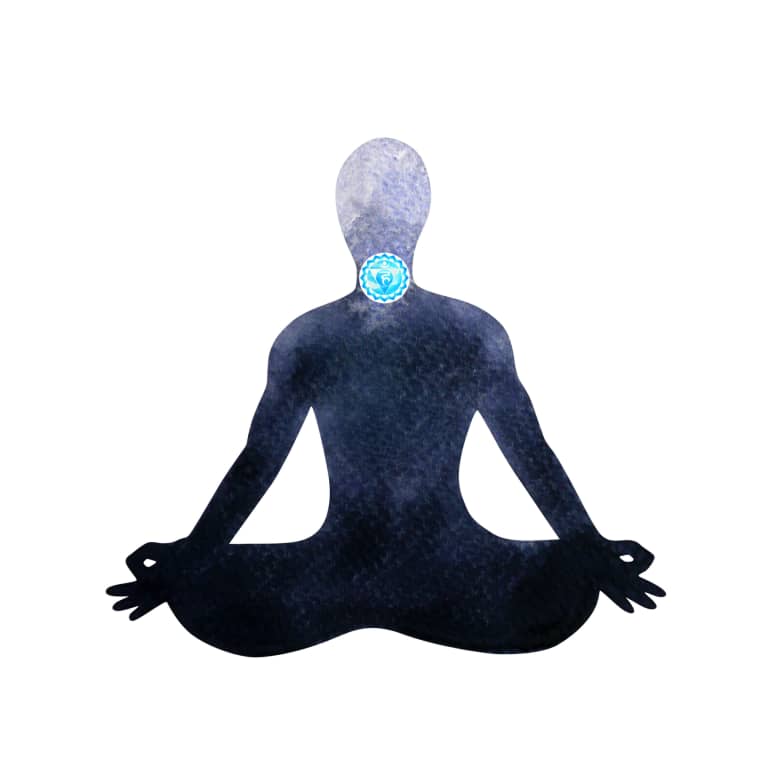
6. Third-Eye Chakra (Ajna)
As we move up the body, we’re getting closer to communion with the divine. The Anja, or third-eye chakra, controls our ability to see the big picture and connect to intuition. Think of it as the eye of the soul: It registers information beyond the surface level.
Visions and intuitive hits are not uncommon for someone with an open third-eye chakra.
Location: Forehead between the eyes (also called the Brow Chakra)
What it controls: Intuition, imagination, and wisdom
Mantra: “I am open to exploring what cannot be seen.”
Color: Dark Blue/Purple
Element: Light
Stone: Amethyst
Yoga pose: Child’s Pose
When it develops: 36-42 years old
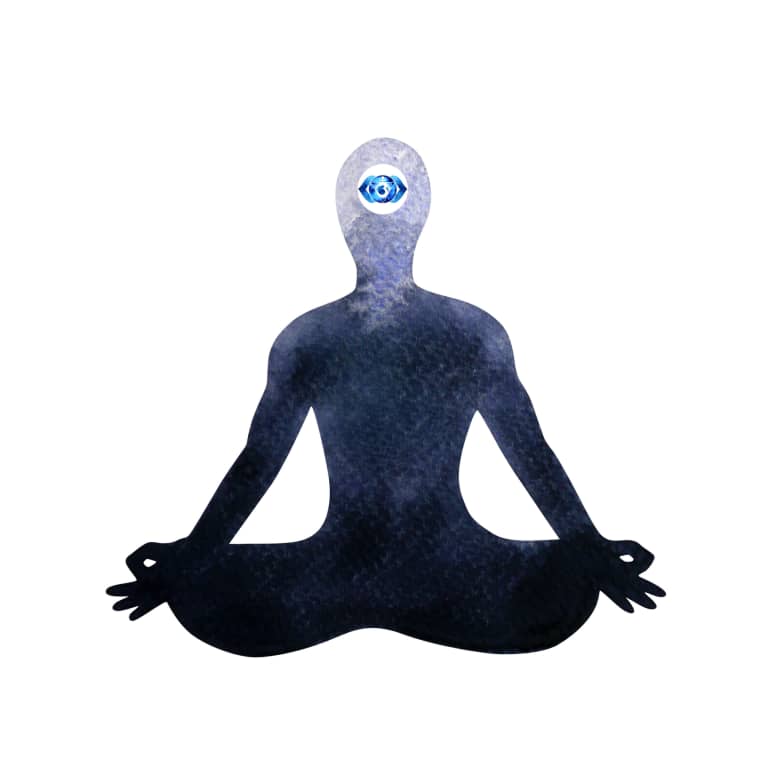
7. Crown Chakra (Sahasrara)
The Sahasrara, or crown chakra, the highest chakra, sits at the crown of the head and represents our ability to be fully connected spiritually. When you fully open your crown chakra—something very few people ever do!—you’re able to access a higher consciousness.
Location: The very top of the head
What it controls: Inner and outer beauty, spiritual connection
Lesson: “I am a vessel for love and light.”
Color: Violet/White
Element: Divine Consciousness
Stone: Clear quartz
Yoga pose: Headstand
When it develops: 43-49 years old

